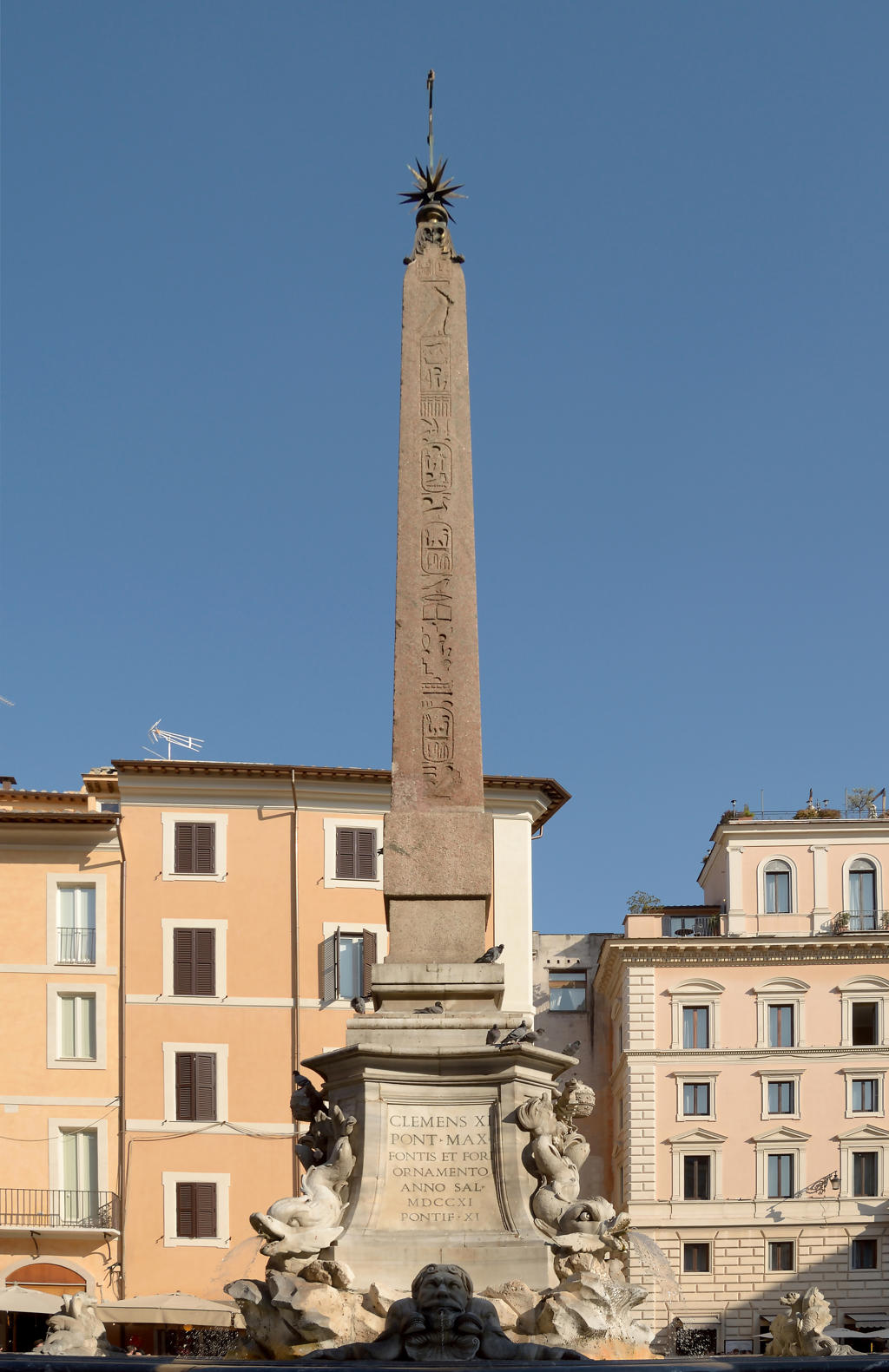About Obelisco Macuteo
The Obelisco Macuteo rises elegantly from the center of Piazza della Rotonda, its ancient hieroglyphs catching the sunlight and drawing the eye upward. This slender, red granite obelisk, originally from Heliopolis in Egypt, stands atop a sculpted marble fountain designed by Giacomo Della Porta in 1575. The fountain's base is adorned with four dolphins, their tails entwined around the central pedestal, from which the obelisk ascends. The juxtaposition of the ancient Egyptian monument with the Renaissance fountain creates a striking visual contrast, embodying the layers of history that define Rome.
Originally erected by Pharaoh Ramses II, the obelisk was brought to Rome during the reign of Emperor Domitian, reflecting the Roman Empire's fascination with Egyptian culture and its symbols of power. It was later moved to its current location in front of the Pantheon by Pope Clement XI in 1711, as part of a broader effort to embellish the city with ancient artifacts. The obelisk's presence in this bustling piazza, surrounded by the vibrant life of modern Rome, serves as a reminder of the city's enduring connection to its imperial past and its role as a custodian of ancient history.
Marks of Time
The hieroglyphs etched into the surface of the Obelisco Macuteo tell stories of ancient Egypt, celebrating the divine power of the pharaohs. These inscriptions, though weathered by centuries, remain a testament to the craftsmanship and religious devotion of the ancient Egyptians. The obelisk itself, a symbol of the sun god Ra, was believed to channel the divine energy of the heavens to the earth. Its relocation to Rome and subsequent integration into the urban landscape illustrate the Roman practice of appropriating and recontextualizing symbols of conquered cultures, a practice that has left a lasting imprint on the city’s architectural heritage.
Plan your perfect trip to Rome with Travo! Download now and start exploring.
Stories in Stone
The fountain beneath the obelisk, with its playful dolphins and robust stone basin, adds a layer of Renaissance artistry to the scene. Designed by Della Porta, a prominent architect of the time, the fountain reflects the Baroque fascination with dynamic forms and the interplay of water and stone. The dolphins, symbols of the sea and often associated with the god Neptune, create a lively contrast to the solemnity of the obelisk. This combination of elements from different eras and cultures encapsulates the eclectic spirit of Rome, where history is not just preserved but actively woven into the fabric of daily life.
Details That Speak
Close inspection of the obelisk reveals the precision of the hieroglyphs, each symbol meticulously carved to convey religious and political messages. The granite, quarried from the Aswan region, speaks to the logistical prowess of the ancient Egyptians, who transported these massive structures across great distances. The fountain’s marble, sourced from local quarries, showcases the skill of Renaissance artisans in transforming raw stone into intricate forms. Together, these materials and their craftsmanship tell a story of human ingenuity and the enduring desire to create monuments that transcend time.
Living History
Today, the Obelisco Macuteo stands as a focal point in Piazza della Rotonda, drawing tourists and locals alike to its base. Its proximity to the Pantheon, one of Rome’s best-preserved ancient buildings, enhances its historical significance, creating a dialogue between different epochs of Roman history. The piazza itself, a lively hub of cafes and street performers, provides a modern counterpoint to the ancient monument, illustrating how Rome continues to be a living museum where the past and present coexist harmoniously. The obelisk, with its storied past, remains a symbol of Rome’s ability to adapt and thrive through the ages.

Map loading...
Location
Piazza della Rotonda, 00186, Roma
